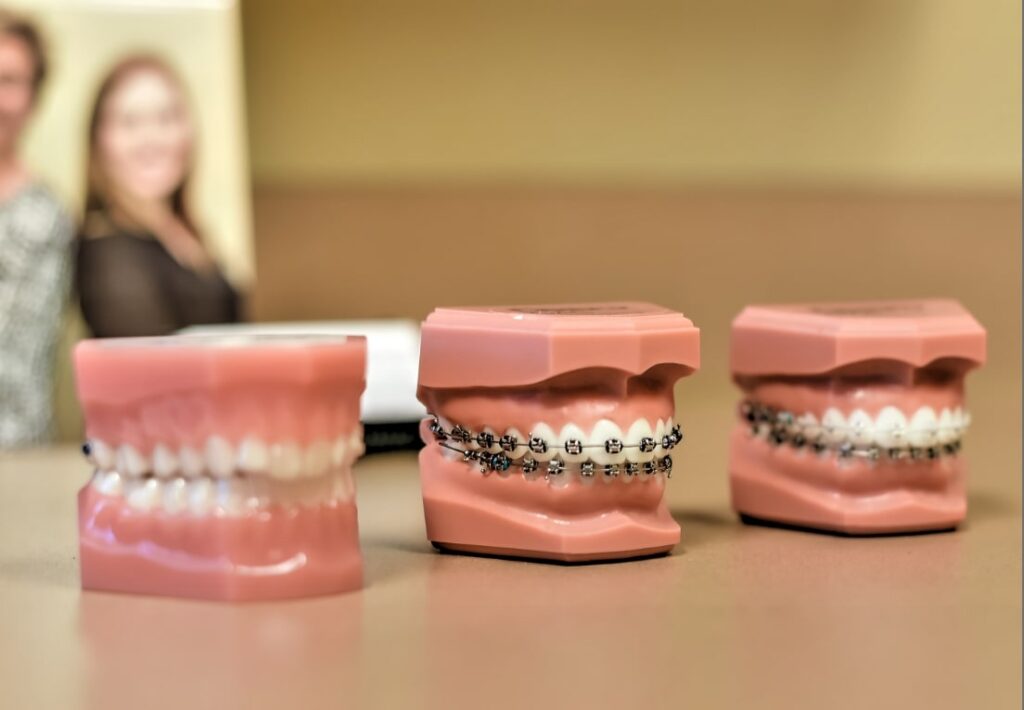Expert Cumming Braces and Aligners: What to Know Before You Go to
Expert Cumming Braces and Aligners: What to Know Before You Go to
Blog Article
Comprehensive Overview to Orthodontics Procedures for Fixing Oral Imbalances
Understanding the intricacies of each procedure, including their devices, advantages, and prospective drawbacks, is essential in making informed decisions concerning one's orthodontic therapy. As we browse with the extensive guide to orthodontic procedures for fixing oral misalignments, the elaborate details of each technique will unfold, losing light on the course toward a useful and harmonious oral positioning.
Orthodontic Procedures Summary

In enhancement to standard braces and clear aligners, orthodontists might likewise suggest various other interventions like headwear, palatal expanders, or retainers to resolve particular placement issues (orthodontist). These procedures are customized per client's special demands and may include a mix of therapies to achieve the preferred outcomes. Normal changes and monitoring are vital components of orthodontic therapy to ensure progression gets on track and to make any needed alterations along the road. By going through orthodontic treatments, people can not only accomplish a straighter grin yet also improve their overall oral health and function.
Traditional Braces: How They Function
When thinking about orthodontic treatments for oral misalignments, typical braces stand out as a reliable method for dealing with teeth positioning. Typical braces contain brackets, cords, and bands that work with each other to apply continual pressure on the teeth, progressively moving them right into the desired alignment. The braces are affixed to the teeth utilizing a special adhesive, and the wires are threaded with the braces. By readjusting the stress of the cables, orthodontists can regulate the direction and pressure applied to each tooth, assisting them right into proper placement over time.
As stress is used to the teeth with the braces, the bone surrounding the teeth is reshaped to support the new tooth positions. Patients will certainly require routine modifications at the orthodontist's workplace to make certain the dental braces proceed to apply the right stress for efficient teeth motion.
Unseen Aligners: Disadvantages and pros
Unseen aligners supply a convenient and discreet alternative to standard dental braces for fixing oral imbalances. These clear, personalized trays are basically unseen when put on, making them an enticing option for individuals seeking an extra cosmetically pleasing orthodontic treatment. One of the key benefits of unseen aligners is their removability, enabling easier upkeep of dental health contrasted to standard braces. Clients can more remove the aligners before consuming or cleaning their teeth, decreasing the risk of food obtaining stuck in the home appliance and simplifying the cleansing process.

Surgical Orthodontic Options
Surgical interventions in orthodontics present practical options for addressing intricate dental misalignments that might not be successfully dealt with via traditional orthodontic therapies. While invisible aligners and typical braces can deal with many orthodontic problems, certain cases require surgical intervention to achieve optimum results. Surgical orthodontic options are normally advised for severe malocclusions, substantial jaw disparities, and instances where the underlying bone structure requires alteration to attain correct placement.
One typical medical orthodontic procedure is orthognathic surgery, which entails repositioning the jaws to remedy useful concerns such as problem speaking or eating. This surgical treatment is often performed in collaboration with an orthodontist that helps align the teeth prior to and after the procedure. Surgical orthodontics might also entail treatments to subject affected teeth, remove excess periodontal tissue, or improve the jawbone to create a more unified face profile.
Prior to taking into consideration medical orthodontic options, clients undergo a comprehensive examination to identify the need and prospective benefits of such interventions. aligners. While surgery might seem complicated, it can significantly boost both the function and visual appeals of the smile in situations where standard orthodontic treatments fall short
Retainers and Post-Treatment Care

Post-treatment care includes following the orthodontist's instructions faithfully. This may consist of correct oral hygiene techniques, attending follow-up appointments, and putting on the retainers as recommended. Failing to follow post-treatment treatment instructions can lead to regression, where the teeth slowly relocate back towards their initial settings. Consistent retainer wear, great dental hygiene, and regular dental check-ups are essential for preserving the outcomes achieved with orthodontic surgery and guaranteeing the long-lasting stability of the remedied dental alignment.
Conclusion
Finally, orthodontic procedures provide numerous options for remedying dental misalignments. Conventional dental braces utilize metal brackets and wires to change teeth into proper positioning. Invisible aligners give a more very discreet option but might not appropriate for all situations. Surgical orthodontic alternatives are readily available for much more severe misalignments. Retainers are generally made use of post-treatment to preserve the brand-new alignment. Overall, orthodontic treatments can efficiently boost oral health and wellness and aesthetic appearance.
As we navigate through the comprehensive guide to orthodontic procedures for correcting oral misalignments, the complex information of each method will unfold, dropping light on the course toward a harmonious and useful dental positioning. - orthodontics
One of the most usual orthodontic therapies is the use of braces, which consist of steel braces and cords that use gentle pressure to progressively shift teeth right into the preferred setting.When taking into consideration orthodontic therapies for dental imbalances, conventional braces stand out as a tried and true technique for remedying teeth placing. Furthermore, unseen aligners might not be ideal for intricate orthodontic problems low income dentist that need even more considerable teeth motion, as they are normally suggested for moderate to moderate cases. Retainers are custom-made orthodontic devices designed to hold teeth in their dealt with placements after the conclusion of orthodontic therapy.
Report this page